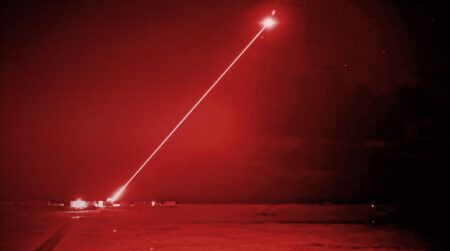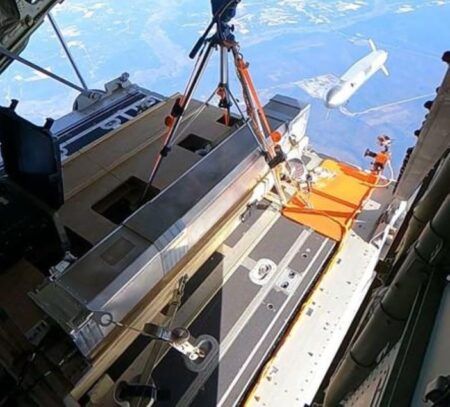A team at Eglin Air Force Base in Florida answered, in just six months, calls to rapidly test, integrate and deploy a high precision, low collateral weapon for immediate use in theater.
Brig. Gen. Shaun Morris, Air Force Program Executive Officer for Weapons and director of the Armament Directorate, assembled a team to produce a rapid fielding plan for the Advanced Precision Kill Weapon System II, a laser-guided rocket that turns existing Hydra 70 unguided rockets into precision-guided munitions through the addition of a laser guidance kit.
APKWS fills the gap between an unguided 2.75-in rocket and the Hellfire missile at less than one-third of the cost with a multi-shot capability. The conversion is an inexpensive modification designed to destroy targets while limiting collateral damage in close combat, according to Maj. Jesse Moreno, APKWS program manager.
The M151, employed against personnel, material and non-armored vehicles, is one of several warheads in the Hydra 70 family. Traditionally referred to as the “10-Pounder,” the weapon’s burst radius is ten meters, however, high velocity fragments can expand its lethality radius beyond 50 meters causing excessive damage. APKWS reduces the M151’s collateral damage while maintaining its integrity in combat.
To accelerate progress, the APKWS Program Office assembled stakeholders from across the Air Force and coordinated with its Navy partners to formulate a plan to integrate the M151 with existing rotary wing hardware. This teamwork was essential, because the Navy owned the program of record, contracting vehicles and production line for APKWS II, according to Moreno.
The team also leveraged the expertise of the 96th Test Wing (TW) community to execute a rapid test event known as Plan 70, where all wing resources were brought to bear on a single test effort to meet and exceed the expected timeline. The effort proved successful as a Compatibility Captive Flight Profile test was performed in just 14 days, compared with the average timeline of three months.
In July, the team successfully performed a final round of integration test shots with the A-10 and F-16 platforms, overseeing seven aircraft missions with 14 successful A-10 and F-16 test shots. Missions included minimum and maximum range, ripple release and trajectory shaping tests against a variety of realistic targets – all validating the program’s capability.
The team solicited the support of the Arizona Air National Guard Air Reserve Test Center to work with the 96th TW community on these tests.
A significant advantage APKWS brings to the fight is an increase weapons load-out for both the A-10 and F-16. This close-air-support capability is a game-changer for warfighters, allowing them to engage several more targets where collateral damage is a concern.
October 20, 2016




